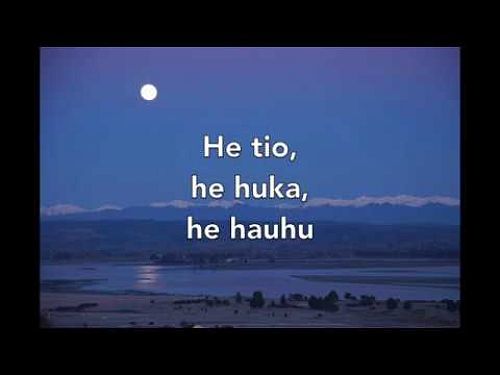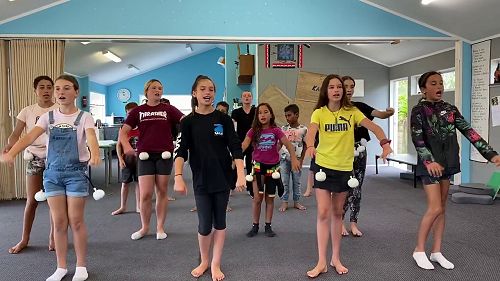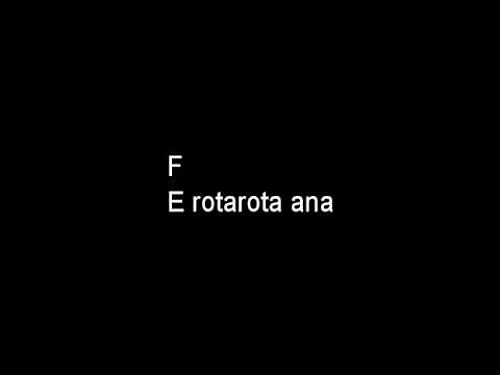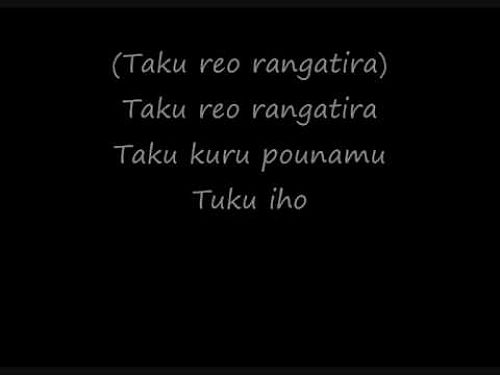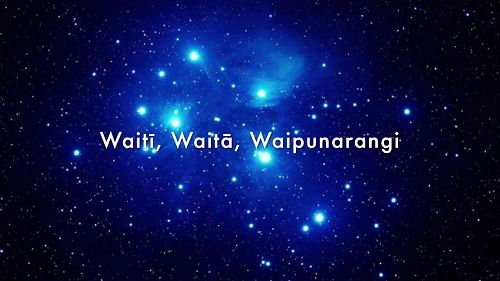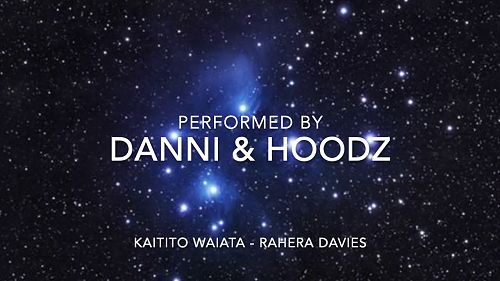
Kapa Haka
Ka Huri taku reo - Turning to my language, Te Reo Māori
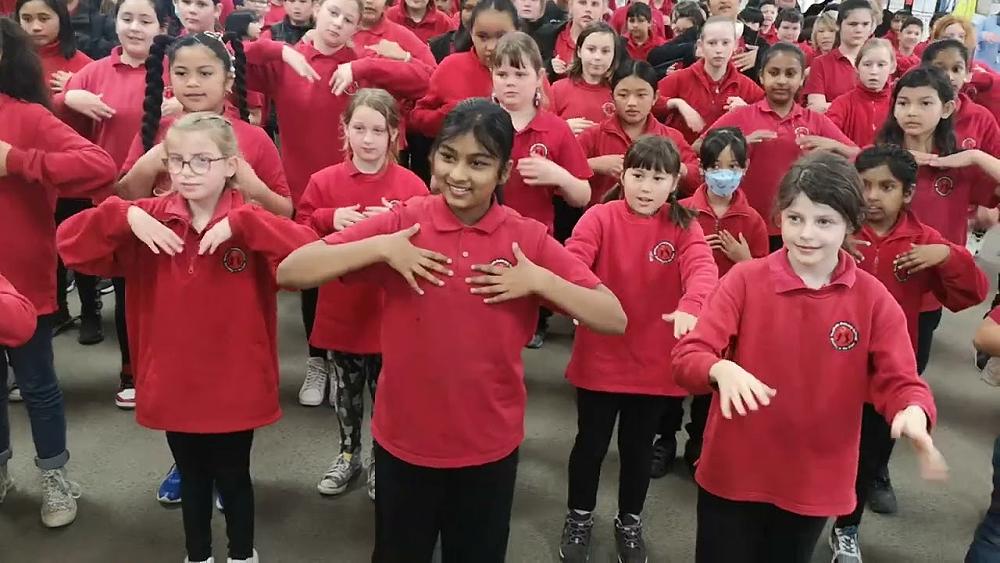
Ka Huri is the waiata that was introduced to our school this week by Matua Sonny and Whaea Tui. The waiata is telling us to turn to the language, From the tail of the fish and up in the sky. Our children through to our elders, everybody turn and listen to me.
This waiata is associated with Dame Whina Cooper. Dame Whina Cooper was a true leader for Māori.
"Woman of mana, teacher, storekeeper, community leader"
The description above was written by Michael King in Te Ara: Dictionary of New Zealand Biography. Dame Whina Cooper, of Te Rarawa descent, was born in 1895 in northern Hokianga. She was a land activist, noted Māori leader and respected kuia (elder). (extract taken from Digital NZ)
Dame Whina Cooper carried out many extrodinary feats and became known as "Mother of the Nation". 1981: New Year Honours - Whina was promoted to Dame Commander of the Order of the British Empire
Dame Whina Cooper was born at Te Karaka in northern Hokianga, and died at Panguru on 26 March 1994. Dame Whina Cooper attended a Māori speaking primary school and was sponsored to attend St Joseph's Māori Girls College in Napier, later on becoming a teacher herself. She campaigned to protect the Whakarapa mud flaps stopping the farmers draining them, she worked on her family farm later owning it with her husband and children. She built a shop and post office later opening branches at Waihou & Mitimiti.
Dame Whina Cooper purchased a dairy farm, played a leading role in her church and opened a community centre. She attended conferences that supported Māori farming, spoke at public speaking events and set up Māori Land development scheme. In 1940 Dame Whina Cooper provided the food for the meeting house Te Whare Rūnanga at Waitangi. In 1946 she welcomed home the Māori Battalion at Te Kotahitanga marae at Kaikohe. 1951: Dame Whina Cooper established Māori Women’s Welfare League – Te Rōpū Wahine Māori Toko i te Ora – & was elected President. By the mid 1950s Dame Whina Cooperr had established over 300 branches, 88 district councils & 4000 members working on Māori housing, child welfare, employment, education, and health issues.
Dame Whina Cooper's last major feat was in 1975 when Te Rōpū o te Matakite asked Dame Whina Cooper to lead them in a protest. Their slogan was "Not one more acre of Māori land". This protest was joined by many. Dame Whina Cooper on 14 Sept 1975, with 50 marchers left Te Hāpua in the Far North. On 23 Sept 1975, Dame Whina Cooper & the marchers crossed the Auckland Harbour Bridge. At instructions of Dame Whina Cooper there were no placards or banners, just a white flag on a carved pouwhenua or land marker pole. Along this journey Dame Whina Cooper stopped in cities and addressed the crowds. On 13 Oct 1975, the hikoi (walk) with up to 5000 people arrived at Parliament after marching 1,100 kms throughout the North Is. Dame Whina Cooper presented a Memorial of Rights & petition to Labour PM Bill Rowling & National Party leader Rob Muldoon
The Memorial of Rights asked the state to preserve the mana and tūrangawaewae of the Māori people. It was signed by 200 Māori elders and the petition by 60,000 people.
Kei Runga te Rakau
This lovely wee waiata lullaby was sung as assembly today by the children of Tāwera 1 and 3 with the support of the children from Kōpū 7.
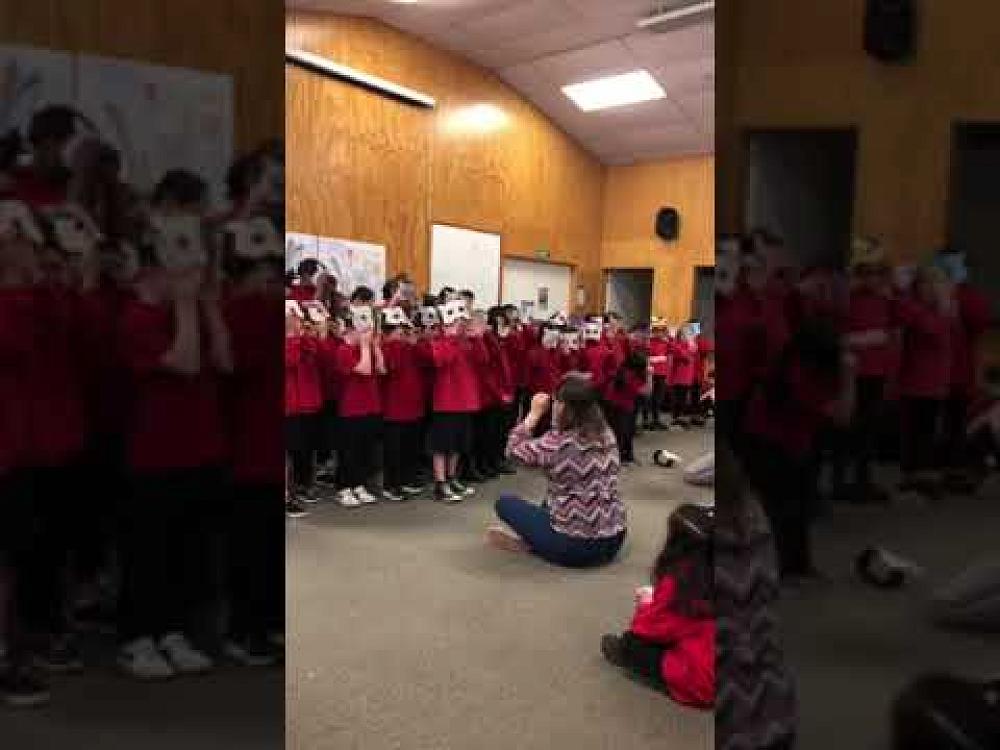
Thursday 22 June
Today the junior team were join by a group of senior kapa haka leaders, Matua Sonny and Whaea Tui to learn the waiata, Matariki e ara e.
This waiata is about the beautiful star cluster called Matariki. Matariki is a star cluster that decorates the chest of Ranganui.
Matariki was used by the early Polynesian explorers to help them navigate their way across the Pacific Ocean to Aotearoa, New Zealand.
For many cultures, these stars are connected to celebration, planting, harvesting, weather, and life. For Māori, the rising of Matariki signals te Mātahi o te Tau, the Māori New Year. The appearance of Matariki in the morning sky is a sign for people to gather, to honour the dead, celebrate the present, and plan for the future.
This star cluster has many names, in Greek, and widely used in English-speaking countries, it is called Pleiades. In Japan, it is called Subaru, which means 'to come together'. In China it is Mao, the hairy head of the white tiger, and in India it is known as Krittika.
Thursday 15 June
This week the senior children were introduced to the meaning and actions for the waiata Ko Te Whirika. This waiata was composed by Charisma Rangipunga and Paulette Tamati-Elliffe in 2011. It is about bringing humanity together. Looking after each other through the hard times and the good times by strengthening the bonds ,welcoming all who come as strangers, getting to know each other, building friendships securing our bond as family.
The junior team revisited with actions the waiata Matariki Makarena. This waiata is sung to the tune of the macarena. It introduces the nine stars of Matariki.
Matariki Makarena
Waitī - Looks after fresh water and all fish in fresh water.
Waitā - Looks after salt water and all fish in the ocean.
Waipunarangi - takes care of the rain "water that pools in the sky".
Tupuānuku - looks after the food that is grown from the ground.
Tupuārangi - looks after the food that comes from the sky and linked to the birds.
Hina-i-te-rangi, - 'wishing star" - promise of a prosperous season.
Pōhutukawa - looks after the spirits of those who have past away.
Ururangi, - takes care of the wind. 'the winds of the sky".
Matariki - is the mother of the stars.

